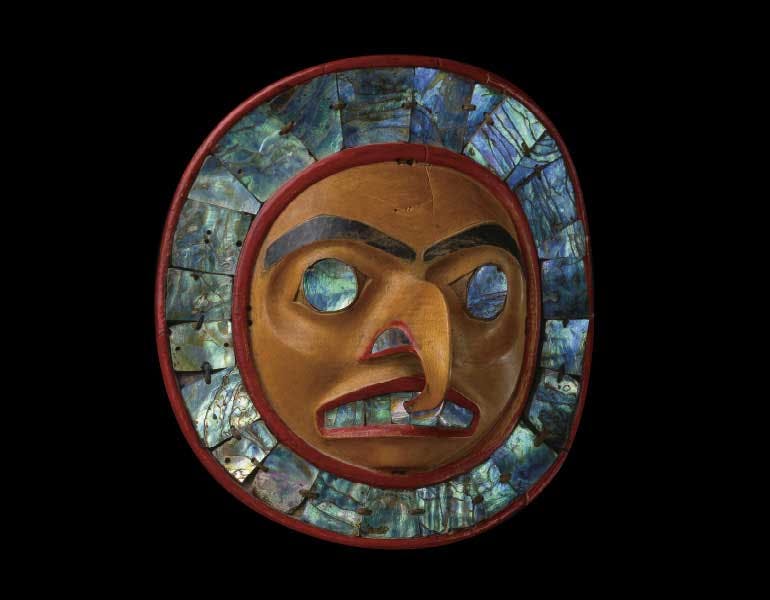
American Indians in Cleveland
- Essay
- Exhibitions

Headdress Frontlet, about 1840–70. Coast? Tsimshian, north British Columbia. Thaw Collection, Fenimore Art Museum, Cooperstown, N.Y., T0177. Photograph by John Bigelow Taylor.
This article was published in 2010 to accompany the exhibition Art of the American Indians: The Thaw Collection. Since then, “Native American” or “Indigenous American” have replaced “Indian” as preferred terminology. See the museum’s Indigenous Peoples and Land Acknowledgment (2023) for further information.
In September of 1957, a small group of American Indians moved to Cleveland; some 5,000 others soon followed. In an article that relied heavily on stereotypes, the Cleveland Plain Dealer introduced readers to the “Real Indians,” who came from various tribes in the western U.S. through a controversial relocation program sponsored by the federal Bureau of Indian Affairs (BIA).

This program was to facilitate an end to government supervision of rural Indian reservations, in part by relocating Indians to urban areas, where they were to assimilate into mainstream society. Verdon C. Christiansen, Cleveland’s BIA agent, said that “If we’ve done our job properly, after 12 months a family will be fully assimilated into the community.” The cost to relocated Indians was often steep: some adjusted but many others suffered economic hardship and overt discrimination after being abruptly disconnected from their cultures and plunged into an urban society that knew little about them. President Richard Nixon renounced the program in 1970.

In Cleveland, as elsewhere, no distinct, self-determined urban American Indian community was possible during the early phase of relocation. Indians were pressured to abandon their cultural identities, cultural expression was absent, mainstream stereotypes dominated, and Indians ventured into a society that regarded them with fascination and astonishment. But loneliness, homesickness, and cultural isolation brought Indians together and in the 1960s they developed a cohesive urban community that coalesced around activities organized by the Cleveland American Indian Center. The Center, founded in 1969, offered job assistance, counseling, and help in preserving Indian identity; for support, American Indians in town turned mainly to the Center rather than the BIA, which expected them to assimilate successfully but provided limited assistance in doing so.

By the early 1970s, the Cleveland landscape was transformed by a charismatic community leader—Russell Means (Lakota), who organized public protests that focused attention on American Indian identity and raised the Indian community’s visibility. Means went on to serve as an early leader of the American Indian Movement (AIM), the well-known activist organization. Cleveland was one of the launching pads for the national Indian rights movement.

In spite of resistance and preservation efforts, tribal identity inevitably diminished in urban settings—Indians found jobs; became neighbors, spouses, and friends; and integrated. In Cleveland, geographic distance weakened ties to reservation culture. Many wonder what might have happened had an entire generation of young, gifted Indian leaders, skilled workers, and homemakers remained on the reservation. Even though relocation succeeded in detaching many American Indians from their cultures, it failed in its broader effort to extinguish American Indian identity. Surviving the assimilation effort, those who relocated to Cleveland forged a unique urban ethnic community that is distinctly American Indian and proud of its cultural heritage. Today, several thousand American Indians live in the greater Cleveland area.

–James Workman, Cleveland, Ohio
About the Author
James Workman is a community educator who specializes in American Indian Relocation in Cleveland. For more than a decade, he has made presentations about Relocation to many university and high school groups. He received a M.A. in history from Cleveland State University and is particularly grateful for the help he has received from members of the local American Indian community.